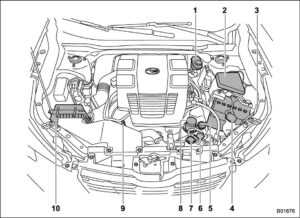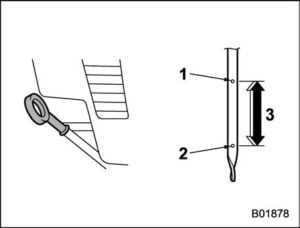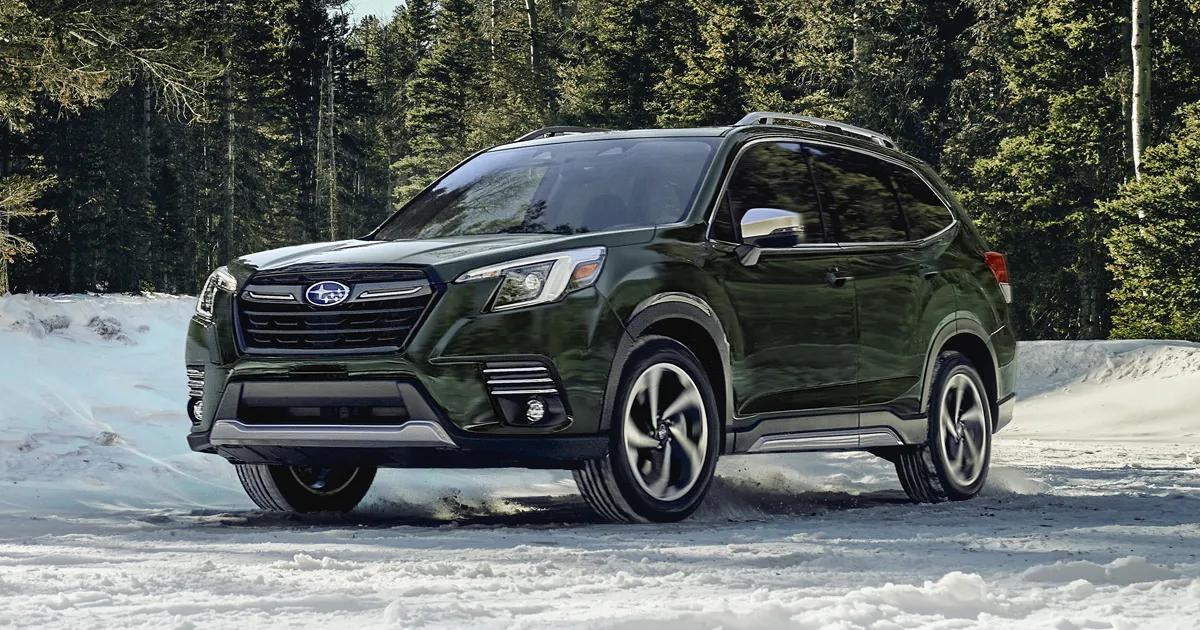Subaru Forester 2023 Maintenance Tips Base
When equipped with the base model, the 2023 Subaru Forester provides a number of features and maintenance advice aimed at preserving the car’s best qualities. To guarantee Forester’s lifetime and dependable operation, routine maintenance procedures including a tire rotation, air filter replacement, and engine oil change are crucial. The “Check Engine” light on the car is a signal from the onboard diagnostic system that helps find possible problems that need to be fixed. The overall dependability and resale value of the Forester can be increased by adhering to the manufacturer’s recommendations, which are detailed in the owner’s manual, for particular maintenance intervals, and by utilizing authentic Subaru parts and approved fluids. The base model of the 2023 Subaru Forester provides a trustworthy and convenient driving experience thanks to its enhanced features and commitment to normal maintenance.
2023 Subaru Forester Specs, Price, Features, Mileage (Brochure)
Maintenance tips
Some clips and fender linings must be removed before replacing the air cleaner elements or specific bulbs.
Removing and reinstalling clips
Removing clips
There are several types of clips used for your vehicle.
Type A clips
- Turn the clips counterclockwise using a flat-head screwdriver until the center portion of the clip is raised.
- Remove the clips with a flat-head screwdriver using leverage.
- Remove the entire clip by pulling it up.
Type B clips
- Pull out the center portion of the clip using a flat-head screwdriver as shown in the illustration.
- Pull the protruded center portion to remove the entire body of the clip.
Type C clips

- Turn the clip counterclockwise using a Phillips screwdriver until the center portion of the clip is raised.
- Remove the entire clip by pulling it up
Reinstalling clips

Engine hood
- Be extremely careful not to catch fingers or other objects when closing the engine hood.
- Do not push the hood forcibly to close it. It could deform the metal.
- Be extremely careful opening the engine hood when the wind is strong. The engine hood could close suddenly, possibly causing injuries from slamming.
- Do not install accessories other than genuine SUBARU parts to the engine hood. If the engine hood becomes too heavy, the
stay may not be able to support holding it open. - Check that the end of the hood stay is inserted into the slot. If it is not inserted properly, the hood may drop and cause injury
To open the hood:
- If the wiper blades are lifted off the windshield, return them to their original position.

- Pull the hood release knob under the instrument panel.

- Release the secondary hood release by moving the lever between the front grille and the hood toward the left.

- Lift up the hood, release the hood prop from its retainer, and put the end of the hood prop into the slot in the hood. Hold the grip for handling the hood prop.
To close the hood:
- Lift the hood slightly remove the hood prop from the slot in the hood and return the prop to its retainer.
- Lower the hood to a height of approximately 7.8 to 11.8 in (20 to 30 cm) above its closed position and then let it drop.
- After closing the hood, be sure the hood is securely locked.
If this does not close the hood, release it from a slightly higher position.
WARNING
Always check that the hood is properly locked before you start driving. If it is not, it might fly open while the vehicle is moving and block your view, which may cause an accident and serious bodily injury.
Engine compartment overview

- Brake fluid reservoir
- Fuse box
- Battery
- Windshield washer tank
- Engine oil filler cap
- Engine coolant reservoir
- Radiator cap
- Engine oil filter
- Engine oil level gauge
- Air cleaner case
Engine oil
CAUTION
- If the level gauge cannot be pulled out easily, twist the level gauge right and left, then gently pull it out. Otherwise, you may be injured accidentally straining yourself.
- Use only engine oil with the recommended grade and viscosity.
- Be careful not to spill engine oil when adding it. If oil touches the exhaust pipe, it may cause a bad smell, smoke, and/or a fire. If engine oil gets on the exhaust pipe, be sure to wipe it off.
Engine oil consumption
Some engine oil will be consumed while driving. The rate of consumption can be affected by such factors as transmission type, driving style, terrain, and temperature. Under the following conditions, oil consumption can be increased and may require refilling between maintenance intervals.
- When the engine is new and within the break-in period.
- When the engine oil is of lower quality. When the incorrect oil viscosity is used. When engine braking is employed (repeatedly).
- When the engine is operated at high engine speeds (for extended periods of time).
When the engine is operated under heavy loads (for extended periods of time). - When towing a trailer
- When the engine idles for extended periods of time.
- When the vehicle is operated in stop-and-go and/or heavy traffic situations. When the vehicle is used under severe thermal conditions.
- When the vehicle accelerates and decelerates frequently.
Under these or similar conditions, you should check your oil at least every 2nd fuel fill-up and change your engine oil more frequently. Different drivers in the same car may experience different results. If your oil consumption rate is greater than expected, contact your authorized SUBARU dealer who may perform a test under controlled conditions.
Locations of the oil level gauge, oil filler cap, and oil filter

- Oil level gauges
- Oil filler cap
- Oil filter
Checking the oil level
- Park the vehicle on a level surface and turn the ignition switch to the “LOCK”/ “OFF” position. If you check the oil level just after turning the ignition switch to the “LOCK”/“OFF” position, wait for at least 5 minutes for the oil to drain back into the oil pan before checking the level.
CAUTION
If the level gauge cannot be pulled out easily, twist the level gauge right and left, then gently pull it out. Otherwise, you may be injured accidentally straining yourself. - Pull out the level gauge, wipe it clean, and insert it again.
- Be sure the level gauge is correctly inserted until it stops.

- Full level
- Low level
- Approximately 1.1 US qt (1.0 liters, 0.9 Imp qt) from low level to full level
- Pull out the oil level gauge again.
- Check the oil levels on both sides of the level gauge. The engine oil level must be judged by the lowest of the two levels. If the oil level is below the low-level mark, add oil so that the full level is reached.
CAUTION
- Be careful not to touch the engine oil filter when removing the oil filler cap. Doing so may result in a burn, a pinched finger, or may cause some other injury.
- Use only engine oil with the recommended grade and viscosity.
- Be careful not to spill engine oil when adding it. If oil touches the exhaust pipe, it may cause a bad smell, smoke, and/or a fire. If engine oil gets on the exhaust pipe, be sure to wipe it off.
To add engine oil, remove the engine oil filler cap and slowly pour engine oil through the filler neck. After pouring oil into the engine, you must use the level gauge to confirm that the oil level is correct.
NOTE
- To prevent overfilling the engine oil, do not add any additional oil above the upper level when the engine is cold.
- After adding or changing the engine oil, warm up the engine and stop it on a level surface, then start the engine after a lapse of 1 minute or more. Confirm that the warning light has turned off after the engine has started.
Changing the oil and oil filter
Change the oil and oil filter according to the maintenance schedule in the “Warranty and Maintenance Booklet”.
The engine oil and oil filter must be changed more frequently than listed in the maintenance schedule when driving on dusty roads, when short trips are frequently made, or when driving in extremely cold weather.
NOTE
- Changing the engine oil and oil filter should be performed by a well-trained expert. Contact your SUBARU dealer to change the engine oil and oil filter. Fully trained mechanics are on standby at a SUBARU dealer to utilize the special tools, spare parts, and recommended oil for this work, and also, Change the oil and oil filter according to the maintenance schedule in the “Warranty and Maintenance Booklet”.
The engine oil and oil filter must be changed more frequently than listed in the maintenance schedule when driving on dusty roads, when short trips are frequently made, or when driving in extremely cold weather.
NOTE
Changing the engine oil and oil filter should be performed by a well-trained expert. Contact your SUBARU dealer to change the engine oil and oil filter. Fully trained mechanics are on standby at a SUBARU dealer to utilize the special tools, spare parts, and recommended oil for this work, and also, self, observe the local regulations and dispose of waste oil properly.
Recommended grade and viscosity
Use only engine oil with the recommended grade and viscosity.
NOTE
Engine oil viscosity (thickness) affects fuel economy. Oils of lower viscosity provide better fuel economy. However, in hot weather, oil of higher viscosity is required to properly lubricate the engine.
Synthetic oil
You should use synthetic engine oil that meets the same requirements given for conventional engine oil. When using synthetic oil, you must use oil of the same classification, viscosity, and grade shown in this Owner’s Manual. Also, you must follow the oil and filter change intervals shown in the “Warranty and Maintenance Booklet”.
NOTE
Synthetic oil of the grade and viscosity noted in Chapter 12 is the recommended engine oil for optimum engine performance. Conventional oil may be used if synthetic oil is unavailable.
FAQ
Subaru typically recommends changing the engine oil every 6,000 to 7,500 miles, but it’s best to follow the manufacturer’s guidelines outlined in the owner’s manual.
The Forester may require specific oil viscosity and API (American Petroleum Institute) ratings, which can be found in the owner’s manual.
The recommended tire pressure can vary depending on factors such as tire size and load. You can find the correct tire pressure specifications on the driver’s side door jamb or in the owner’s manual.
Tire rotation is typically recommended every 6,000 to 8,000 miles to ensure even tire wear.
Yes, many basic maintenance tasks can be performed by the owner. Consult the owner’s manual for guidance and follow safety precautions.
When the “Check Engine” light illuminates, it’s advisable to have the vehicle’s onboard diagnostic system scanned by a mechanic to identify and address any issues.
Engine air filter replacement is typically recommended every 15,000 to 30,000 miles, but check the owner’s manual for specific intervals.
The lifespan of brake pads can vary depending on driving habits and conditions. Inspect the brake pads regularly and replace them when they are worn down to the manufacturer’s specifications.
The Forester may have a timing belt or a timing chain, and replacement intervals differ. Refer to the owner’s manual for specific information.
Keep the battery terminals clean, secure, and free of corrosion. Test the battery’s voltage regularly and replace it when it no longer holds a charge.
Subaru typically recommends changing the coolant every 30,000 to 50,000 miles or as indicated in the owner’s manual.
While aftermarket parts are available, it’s advisable to use genuine Subaru parts and recommended fluids to ensure compatibility and maintain warranty coverage.
Unusual noises or vibrations can be signs of various issues, such as worn components or loose parts. Have the vehicle inspected by a mechanic to diagnose and address the problem.
Yes, regular maintenance helps keep the Forester in good condition, ensuring longevity and potentially increasing its resale value.
Regular maintenance tasks include checking the AWD system’s fluid levels and ensuring proper tire maintenance to maintain AWD performance.
Useful Link
View Full User Guide: Subaru Forester 2023 Base User Guide
Download Manuals: https://www.subaru.com/owners/vehicle-resources/manuals.html
2023 Subaro Forester Specs, Price, Features, Mileage (Brochure)


